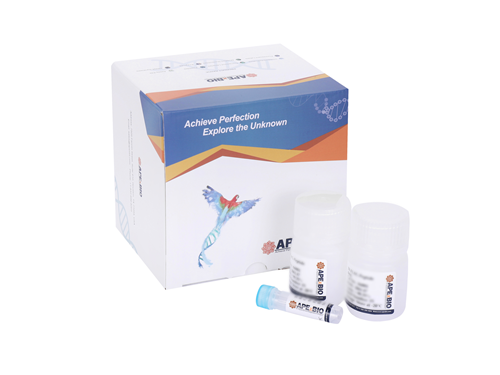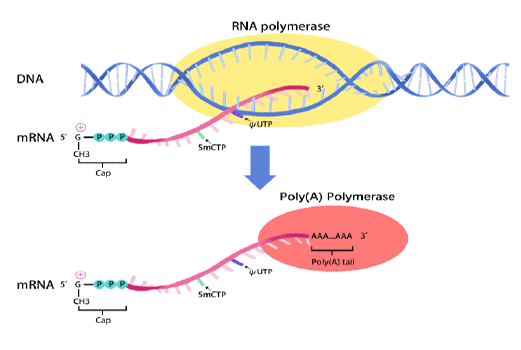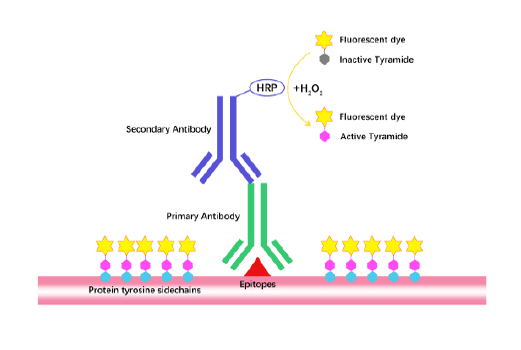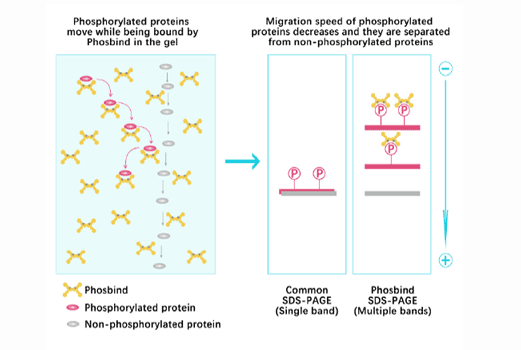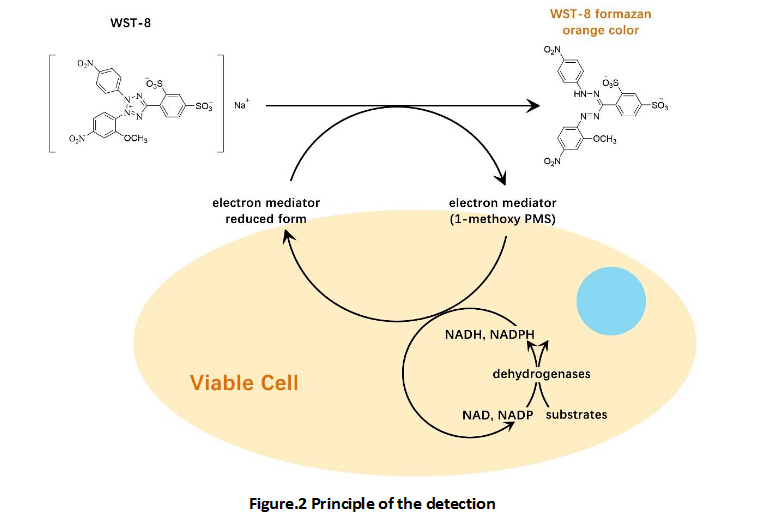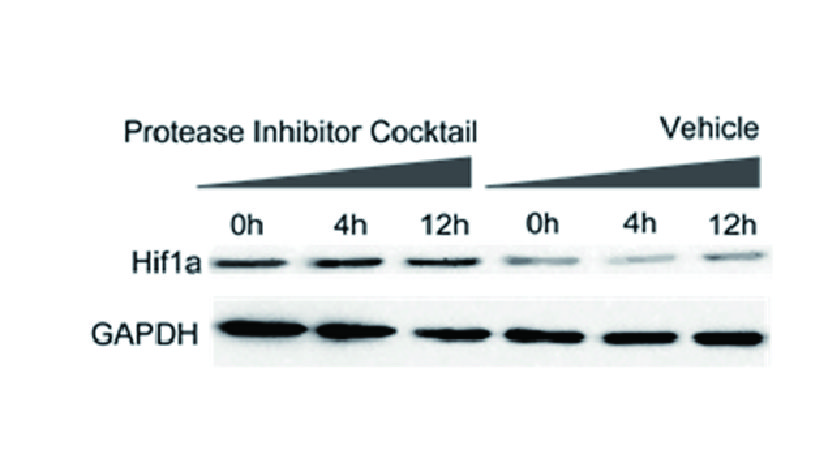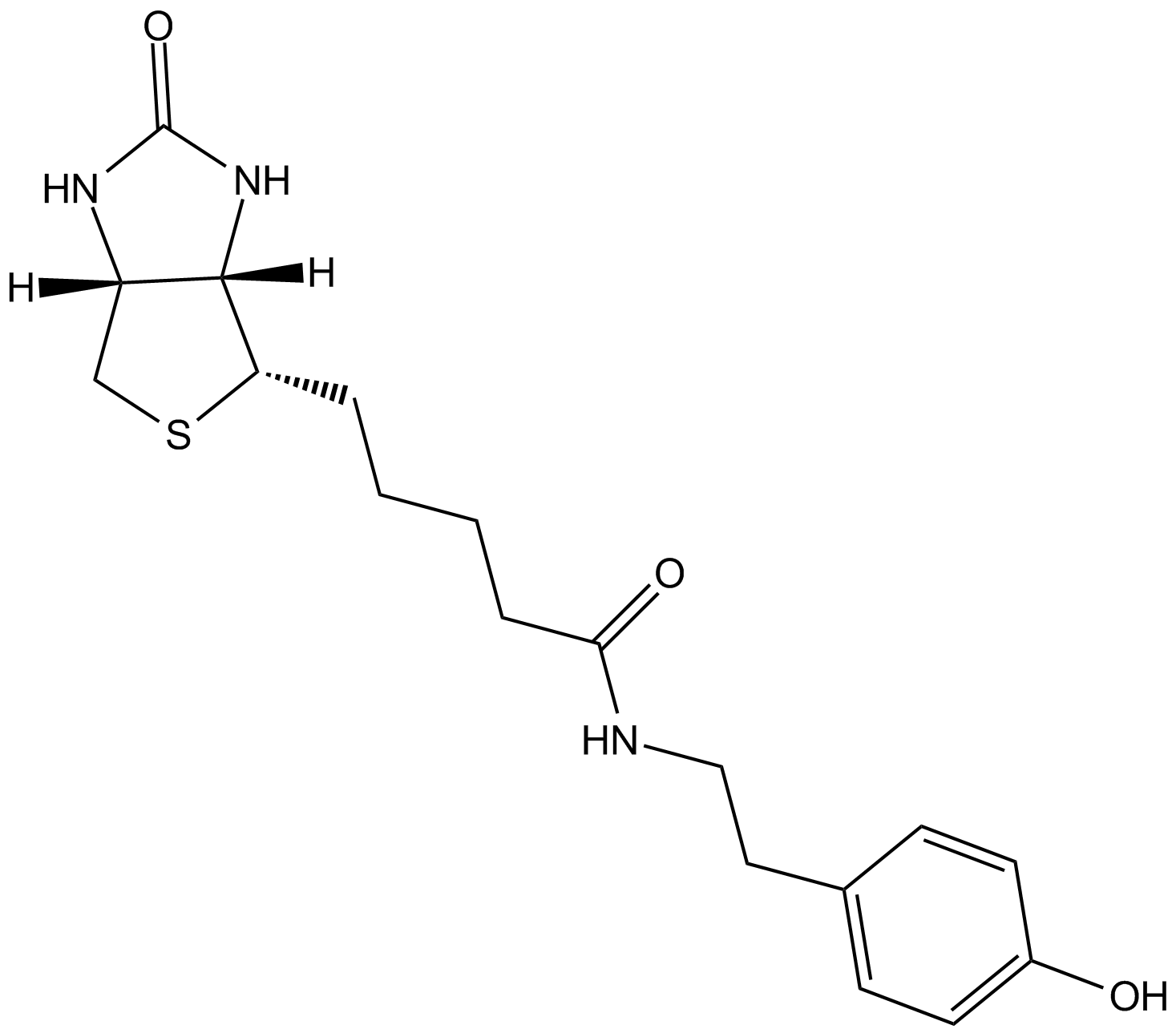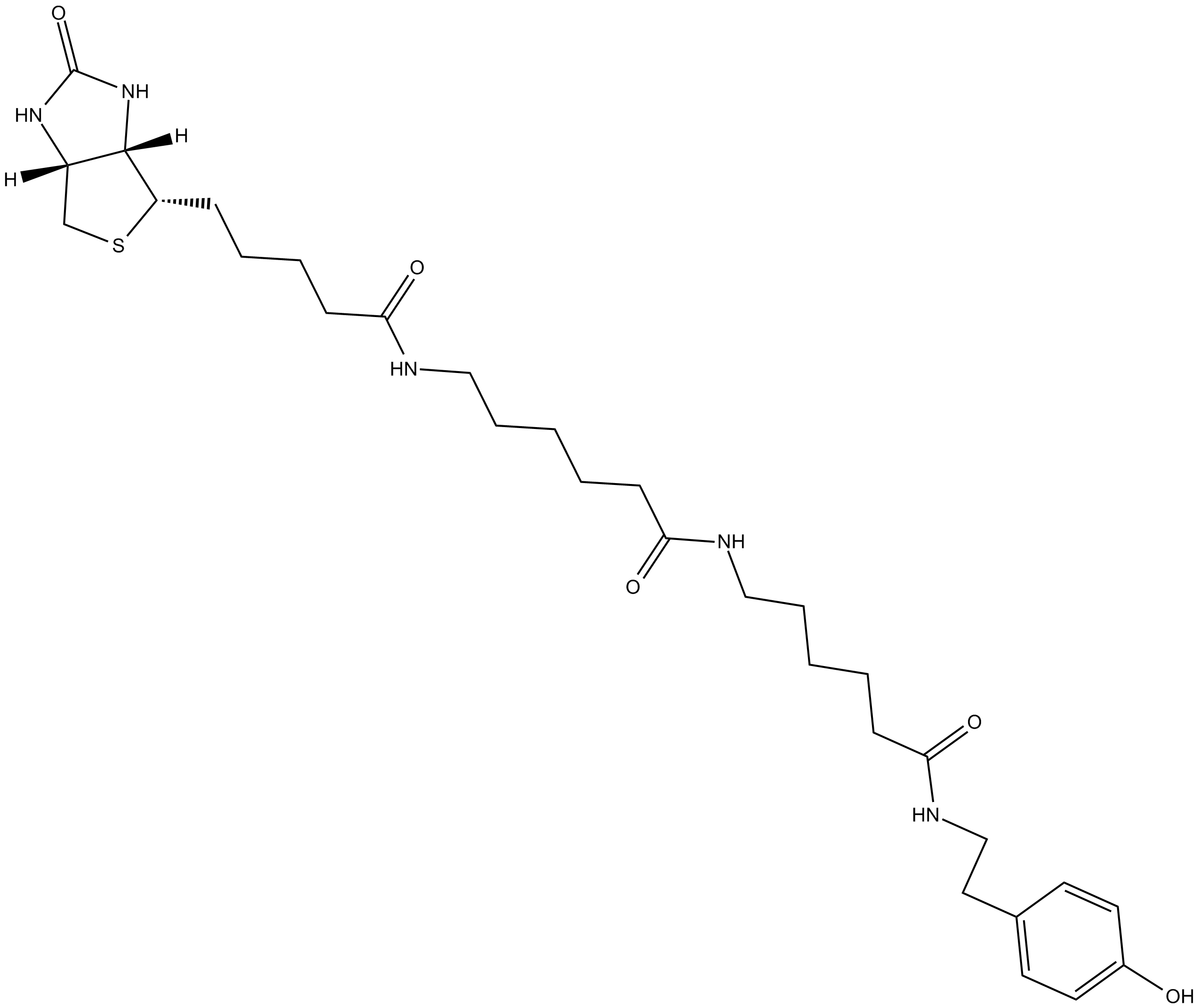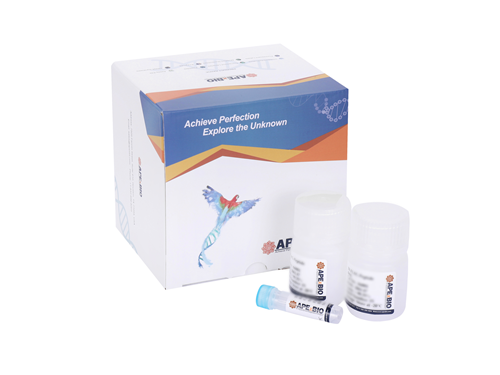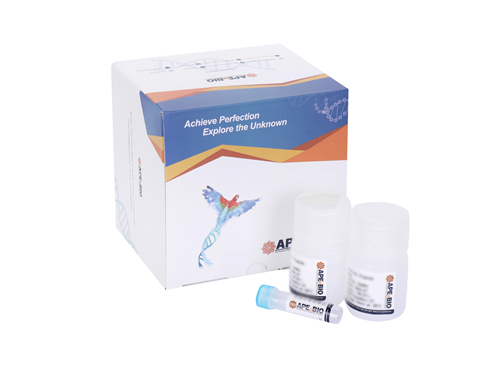Fluorescein TSA Fluorescence System Kit
The Fluorescein TSA Fluorescence System uses tyramide signal amplification (TSA) to boost detection sensitivity in IHC, ICC, and ISH. HRP-linked secondary antibodies catalyze fluorescein-labeled tyramide into a reactive intermediate that covalently binds adjacent tyrosine residues, depositing high-density fluorescence around targets to amplify low-abundance molecule detection. Detectable via fluorescence microscopy (excitation 494 nm, emission 517 nm), it applies to analyzing proteins, nucleic acids, and other biomolecules in fixed cells and tissues.
- 1. Chen Xiaoyang, Chen Yijun, et al. "Resibufogenin protects against atherosclerosis in ApoE-/-mice through blocking NLRP3 inflammasome assembly." J Adv Res. 2025 Apr 19:S2090-1232(25)00272-3 PMID: 40258472
- 2. Shaoyu Zhang, Qunxia Gu, et al. "An amino acid‐tuned gustatory receptor relatively abundant in the silkworm gut is crucial for growth and development." Pest Manag Sci. 2025 Apr 3. PMID: 40181590
- 3. Ke-Han Chen, Rui Xu, et al. "Evaluating the Efficacy and Safety of Emodin, Luteolin, and Paeonol Combination from Dahuang Mudan Decoction in Ameliorating Ulcerative Colitis." J Ethnopharmacol. 2025 Apr 25:346:119692. PMID: 40157404
- 4. Zengfeng Pan, Caiyan Gan, et al. "Gancao **exin decoction attenuated experimental colitis through suppressing ACSL4-mediated ferroptosis." J Ethnopharmacol. 2025 Mar 26:344:119532. PMID: 39993549
- 5. Xiaodong Duan, Chong Zhang, et al. "Suppression of epileptic seizures by transcranial activation of K+-selective channelrhodopsin." Nat Commun. 2025 Jan 10;16:559 PMID: 39789018
- 6. Qijun Wan, Zhichen Yang, et al. "Central Angiotensin II type 1 receptor deficiency alleviates renal fibrosis by reducing sympathetic nerve discharge in nephrotoxic folic acid–induced chronic kidney disease." PeerJ. 2024 Sep 26:12:e18166 PMID: 39346076
- 7. Xiaoxue Jiang, Kan liu, et al. "Hypothalamic SLC7A14 accounts for aging-reduced lipolysis in white adipose tissue of male mice." Nat Commun. 2024; 15: 7948. PMID: 39261456
- 8. Jie Hong, Jie Liu, et al. "MiR-3180 inhibits hepatocellular carcinoma growth and metastasis by targeting lipid synthesis and uptake." Cancer Cell Int. 2023 Apr 11;23(1):66. PMID: 37041584
- 9. Jianan Li, Ruotian Xie, et al. "Tumor necrosis factor ligand‐related molecule 1A maintains blood–retinal barrier via modulating SHP‐1‐Src‐VE‐cadherin signaling in diabetic retinopathy." FASEB J. 2021 Nov;35(11):e22008. PMID: 34679191


Related Biological Data



| Complete Kit | 100-300 slides | 200-600 slides |
| 1X Amplification Diluent | 30 mL | 60 mL |
| Fluorescein Tyramide (dry, dissolve in 60 μL DMSO) | 1 tube | 2 tubes |
| Blocking Reagent | 6 g | 12 g |
Store Fluorescein Tyramide in the dark at -20°C for 2 years. Keep 1X Amplification Diluent and Blocking Reagent at 4°C for 2 years. | ||



